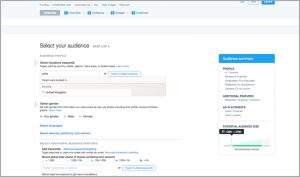
Without a context how do we know who is right?
Pre-release testing of software and pre-live testing of websites are common practices to make sure that everything looks right and all the functionality performs as expected. What some people don’t realize is the importance of performing that same kind of testing on all localized websites and software. There is a tendency to focus too much on the translation part of localization and to believe that, as long as the translation is acceptable, everything will be fine.
But getting a solid professional translation of your app or website isn’t all there is to it. There are two major reasons:
- Context is everything
- It’s not all about the translation
Context is everything
In software and to a lesser extent website localization, a translator may be faced with text strings with little or no context. We advise developers to provide context in the Excel, XML, or other files that they provide, but it is not easy to anticipate all questions. We also encourage translators to ask questions if they are unsure about context, but it’s impossible for them not to make some assumptions from prior experience. Think of all the words in English that can be used as nouns or adjectives or verbs, sometimes with different pronunciations [CON-tent (noun) vs con-TENT (adjective)]. Such words have tripped up many a crossword puzzle solver.
It’s only when a reviewer is able to see all the text in the context of actually using the software or website that they can be sure that all of the translated words reflect the true meaning of the content and that things like gender and number are correct.
Using pseudo translation before starting the project helps us predict where translated text may expand and exceed the space allotted for it, but there are additional problems that can only be spotted when testing the actual product: line breaks that split words, for example.
It’s not all about the translation
There is also more to localization than translation. You will want your software or web forms to conform to local users’ expectations and practices. Not all cultures use the first name + last name formulation, for example. Formatting of dates varies, different currencies are used. You will want users to be able to see such data and be able to enter it in their preferred manner.
Sometimes text is overlooked in extracting the content for translation—error messages for example. It is also possible that process of extracting the text and reimporting the translated text will “break” some features. The more automated the process, the less likely it is that code will be affected, but it does happen. Also the translation of some elements may have an impact on functionality. For example, for most languages we translate the page URLs, which will require changes in internal links, as well.
There’s no substitute for an actual user
All of this means that there is no substitute for a final review of a localized website or software in actual use. The more complex your site or software is, the more important the review by a native-language reviewer or reviewers—preferably in-country—using the same platforms that the final users will likely have access to.
We always recommend to our clients that we conduct pre-release reviews of websites and software that we have localized. Our linguists are asked to review all screens and test all links and functionality as thoroughly as possible. We provide them with spreadsheets with the site structure and links to all the pages so that nothing will be missed. They use these spreadsheets to detail the issues they found and exactly where those issues appeared, providing screenshots for illustration where necessary. Based upon these reviews, errors can be corrected before the website or application is released to the public, without potentially harmful consequences to the company’s reputation.
Over time, the results of the review can feed back into the development and localization process so that the likelihood of localization errors continually decreases. Developers learn what coding issues are likely to come up and where context needs to be provided. The localization team learns more about the overall context and client preferences so that incorrect assumptions are more likely to be avoided in translating updates to the software or website.
Take the time to thoroughly test localized versions of any software or website before release. It’s well worth the additional time and expense and will lead to future savings.
Digital & Social Articles on Business 2 Community(30)







